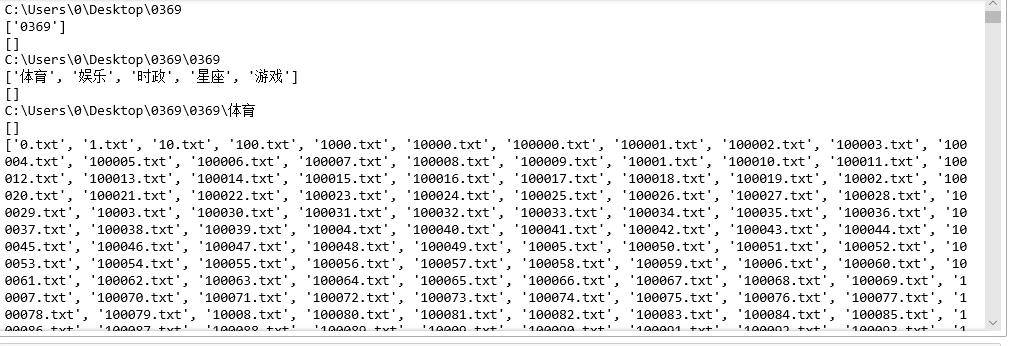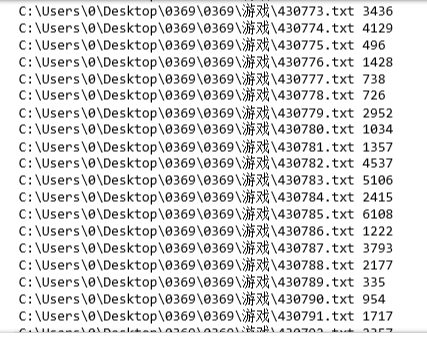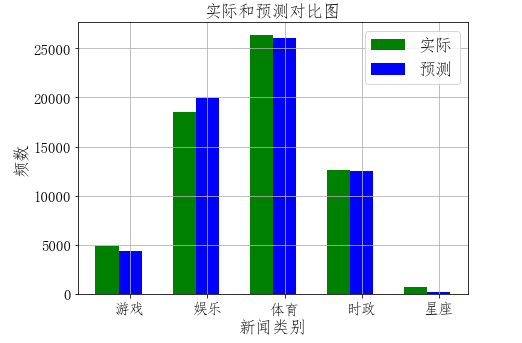大作业
一、boston房价预测
1. 读取数据集
#导入包 from sklearn.model_selection import train_test_split from sklearn.preprocessing import PolynomialFeatures import pandas as pd
#导入数据集
from sklearn.datasets import load_boston
from sklearn.model_selection import train_test_split
2. 训练集与测试集划分
#波士顿房价数据集 data = load_boston() # 划分数据集 x_train, x_test, y_train, y_test = train_test_split(data.data,data.target,test_size=0.3)
3. 线性回归模型:建立13个变量与房价之间的预测模型,并检测模型好坏。
#建立模型
from sklearn.linear_model import LinearRegression
LR = LinearRegression()
LR.fit(x_train,y_train)
print('系数:',LR.coef_,"截距:",LR.intercept_)
运行结果:

#检测模型好坏
from sklearn.metrics import regression
y_predict = LR.predict(x_test)
# 计算模型的预测指标
print("线性回归预测的均方误差:", regression.mean_squared_error(y_test,y_predict))
print("线性回归预测的平均绝对误差:", regression.mean_absolute_error(y_test,y_predict))
# 打印模型的分数
print("线性回归模型的分数:",LR.score(x_test, y_test))
运行结果:

4. 多项式回归模型:建立13个变量与房价之间的预测模型,并检测模型好坏。
# 多元多项式回归模型 # 多项式化 poly2 = PolynomialFeatures(degree=2) x_poly_train = poly2.fit_transform(x_train) x_poly_test = poly2.transform(x_test)
# 建立模型
LRP = LinearRegression()
LRP.fit(x_poly_train, y_train)
运行结果:

# 预测
y_predict2 = LRP.predict(x_poly_test)
# 检测模型好坏
# 计算模型的预测指标
print("多元多项式回归预测的均方误差:", regression.mean_squared_error(y_test,y_predict2))
print("多元多项式回归预测的平均绝对误差:", regression.mean_absolute_error(y_test,y_predict2))
# 打印模型的分数
print("多元多项式回归模型的分数:",LRP.score(x_poly_test, y_test))
运行结果:

5. 比较线性模型与非线性模型的性能,并说明原因。
线性模型可以是用曲线拟合样本,但是分类的决策边界一定是直线的。多项式模型是曲线形式,比线性回归模型更加贴近样本点分布的范围,误差值更小。
二、中文文本分类
#导入包
import os
import numpy as np
import sys
from datetime import datetime
import gc
# 用os.walk获取需要的变量,并拼接文件路径再打开每一个文件
path = 'C:\\Users\\0\\Desktop\\0369'
for root,dirs,files in os.walk(path):
print(root)
print(dirs)
print(files)
for f in files:
fn = os.path.join(root,f)
size = os.path.getsize(fn)
print(fn,size)
运行结果:


# 导入结巴库,并将需要用到的词库加进字典
import jieba
# 导入停用词:
with open(r'C:\Users\0\Desktop\stopsCN.txt', encoding='utf-8') as f:
stopwords = f.read().split('\n')
def processing(tokens):
# 去掉非字母汉字的字符
tokens = "".join([char for char in tokens if char.isalpha()])
# 结巴分词
tokens = [token for token in jieba.cut(tokens,cut_all=True) if len(token) >=2]
# 去掉停用词
tokens = " ".join([token for token in tokens if token not in stopwords])
return tokens
tokenList = []
targetList = []
# 用os.walk获取需要的变量,并拼接文件路径再打开每一个文件
for root,dirs,files in os.walk(path):
for f in files:
filePath = os.path.join(root,f)
with open(filePath, encoding='utf-8') as f:
content = f.read()
# 获取新闻类别标签,并处理该新闻
target = filePath.split('\\')[-2]
targetList.append(target)
tokenList.append(processing(content))
#将content_list列表向量化再建模,将模型用于预测并评估模型
# 划分训练集测试集并建立特征向量,为建立模型做准备
# 划分训练集测试集
from sklearn.feature_extraction.text import TfidfVectorizer
from sklearn.model_selection import train_test_split
from sklearn.naive_bayes import GaussianNB,MultinomialNB
from sklearn.model_selection import cross_val_score
from sklearn.metrics import classification_report
x_train,x_test,y_train,y_test = train_test_split(tokenList,targetList,test_size=0.2,stratify=targetList)
# 转化为特征向量,这里选择TfidfVectorizer的方式建立特征向量。不同新闻的词语使用会有较大不同。
vectorizer = TfidfVectorizer()
X_train = vectorizer.fit_transform(x_train)
X_test = vectorizer.transform(x_test)
# 建立模型,这里用多项式朴素贝叶斯,因为样本特征的a分布大部分是多元离散值
mnb = MultinomialNB()
module = mnb.fit(X_train, y_train)
#进行预测
y_predict = module.predict(X_test)
# 输出模型精确度
scores=cross_val_score(mnb,X_test,y_test,cv=5)
print("Accuracy:%.3f"%scores.mean())
# 输出模型评估报告
print("classification_report:\n",classification_report(y_predict,y_test))
运行结果:

#根据特征向量提取逆文本频率高的词汇,将预测结果和实际结果进行对比(用条形图)
# 将预测结果和实际结果进行对比
import collections
import matplotlib.pyplot as plt
from pylab import mpl
mpl.rcParams['font.sans-serif'] = ['FangSong'] # 指定默认字体
mpl.rcParams['axes.unicode_minus'] = False # 解决保存图像是负号'-'显示为方块的问题
# 统计测试集和预测集的各类新闻个数
testCount = collections.Counter(y_test)
predCount = collections.Counter(y_predict)
print('实际:',testCount,'\n', '预测', predCount)
# 建立标签列表,实际结果列表,预测结果列表,
nameList = list(testCount.keys())
testList = list(testCount.values())
predictList = list(predCount.values())
x = list(range(len(nameList)))
print("新闻类别:",nameList,'\n',"实际:",testList,'\n',"预测:",predictList)
运行结果:

# 画图
plt.figure(figsize=(7,5))
total_width, n = 0.6, 2
width = total_width / n
plt.bar(x, testList, width=width,label='实际',fc = 'g')
for i in range(len(x)):
x[i] = x[i] + width
plt.bar(x, predictList,width=width,label='预测',tick_label = nameList,fc='b')
plt.grid()
plt.title('实际和预测对比图',fontsize=17)
plt.xlabel('新闻类别',fontsize=17)
plt.ylabel('频数',fontsize=17)
plt.legend(fontsize =17)
plt.tick_params(labelsize=15)
plt.show()
运行结果:



